I am making a lattice levelplot from x and y factors that range from [0,1]:
x y level
1 m3134 m3134 1.0000000
2 m3134 m416B 0.4189057
3 m416B m3134 0.2696508
4 m3134 mA20 0.3322170
5 mA20 m3134 0.2454191
6 m3134 mB 0.3176792
...
Here is the R script that I use to make the figure from this data:
#!/foo/bar/bin/Rscript --vanilla
args <- commandArgs(TRUE)
mtxFn <- args[1]
pdfFn <- args[2]
mtx <- read.table(mtxFn, col.names=c("x", "y", "level"))
mtx$level[(mtx$level == 1)] <- NA
library(lattice)
trellis.device(dev=pdf, file=pdfFn)
colors <- colorRampPalette(c('red', 'white'))(256)
fig <- levelplot(level~x*y,
data=mtx,
col.regions=colors,
xlab="",
ylab="",
aspect="iso",
scales=list(
x=list(rot=90)
),
panel=function(...) {
arg <- list(...)
panel.levelplot(...)
panel.text(mtx$x, mtx$y, round(mtx$level*100,0), cex=0.5)
}
)
print(fig)
graphics.off();
This works fine. I get the following figure:

However, instead of having cells labeled NA, I would like to leave them as 1.00 values, but color all cells between 10 (a level of 0.10) and 79 (a level of 0.79) with colors. Anything greater than 79 gets colored with the same color as what is applied to a cell with the approx. level of 79. Or, preferably, said cells would be colored black, with no text inside them at all.
Is there a way to accomplish this with levelplot and lattice?
FINAL EDIT
This doesn't give much of a gradient in colors, but I'm close enough that I'll award the bounty, and perhaps look into ggplot2 as an alternative. Thanks for all your hard work on this.
Here is the final edit of my script:
#! /foo/bar/bin/Rscript --vanilla
args <- commandArgs(TRUE)
dfFn <- args[1]
pdfFn <- args[2]
df <- read.table(dfFn,
col.names=c("x", "y", "level"),
stringsAsFactors=TRUE,
colClasses=c("factor", "factor", "numeric"))
df$level <- round(df$level*100, 0)
# reorder cell type row-factors (in reverse of given order)
df$y <- factor(df$y, levels=unique(df$y[length(df$y):1]))
lowestValue <- min(df$level)
secondHighestValue <- unique(sort(df$level, decreasing=TRUE))[2]
n <- 10
col.seq <- seq(lowestValue, secondHighestValue, length.out=n)
brks <- c(0, col.seq, Inf)
cuts <- cut(df$level, breaks = brks)
colors <- colorRampPalette(c("white", "red"))(length(levels(cuts))-1)
colors <- c(colors, "black")
cls <- rep(colors, times = table(cuts))
library(lattice)
trellis.device(dev=pdf, file=pdfFn)
fig <- levelplot(cuts~x*y,
data = df,
cuts = n,
col.regions=cls,
xlab="",
ylab="",
aspect="iso",
scales=list(
x=list(rot=90)
),
panel=function(...) {
arg <- list(...)
panel.levelplot(...)
panel.text(df$x, df$y, df$level, cex=0.5)
},
colorkey=list(col=colorRampPalette(c("white", "red"))(length(col.seq)), at=col.seq)
)
print(fig)
graphics.off()
Here is the levelplot that this script makes:

If I increase n above 15, the cell coloring breaks once again, returning to a diagonal of bright red, instead of black (as shown).
